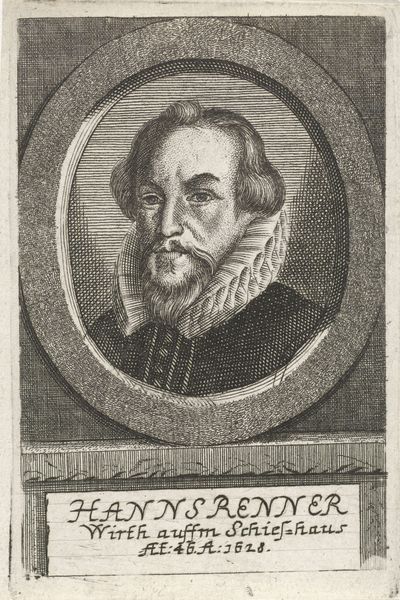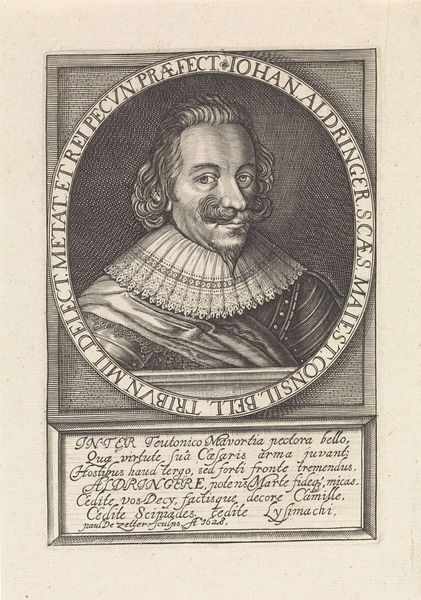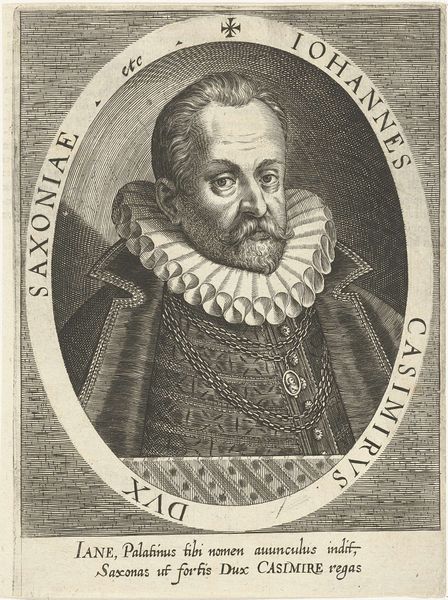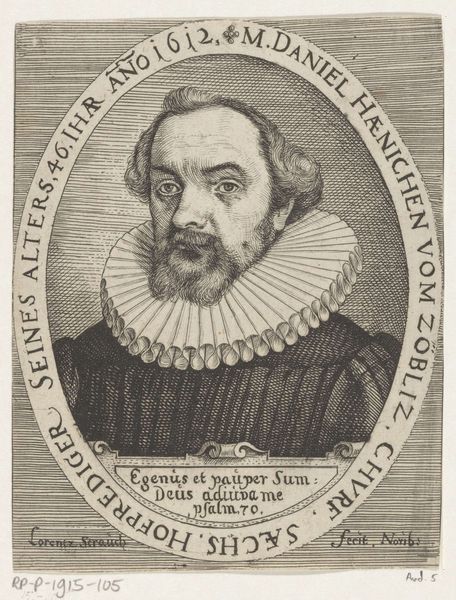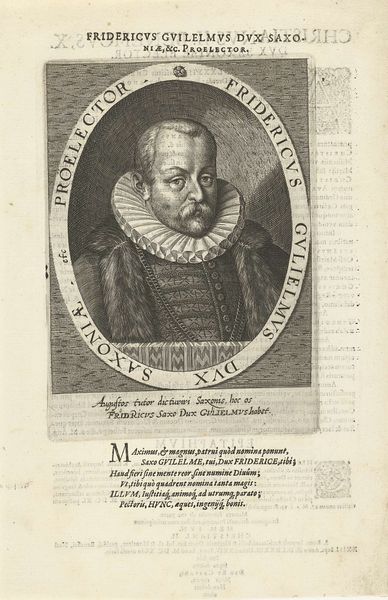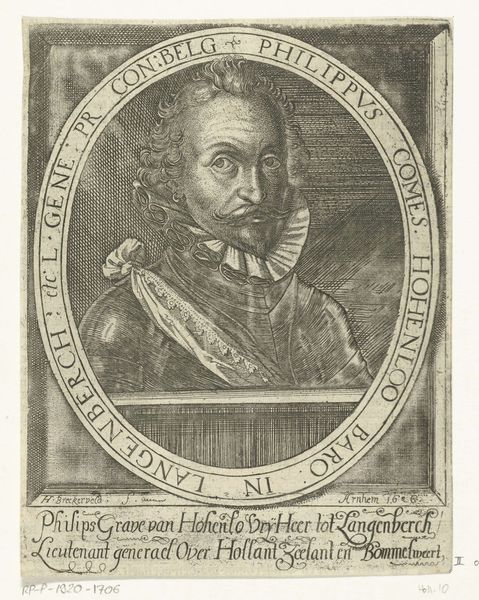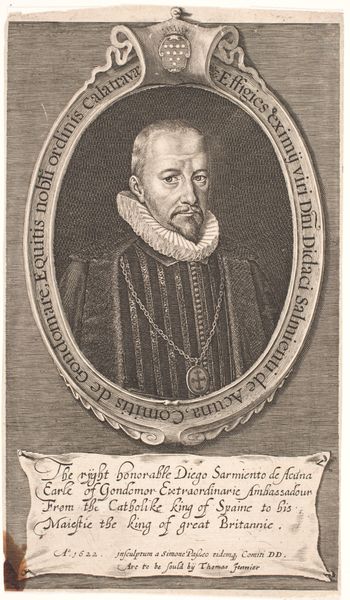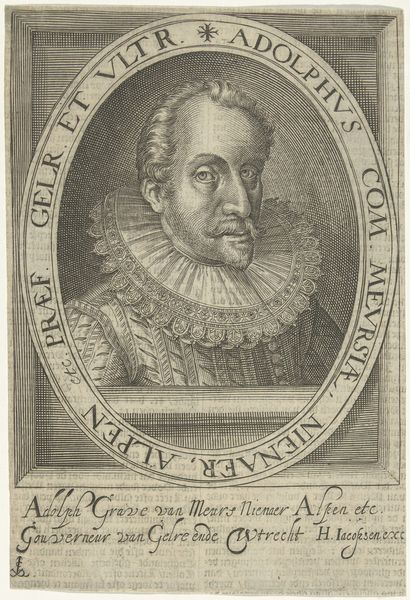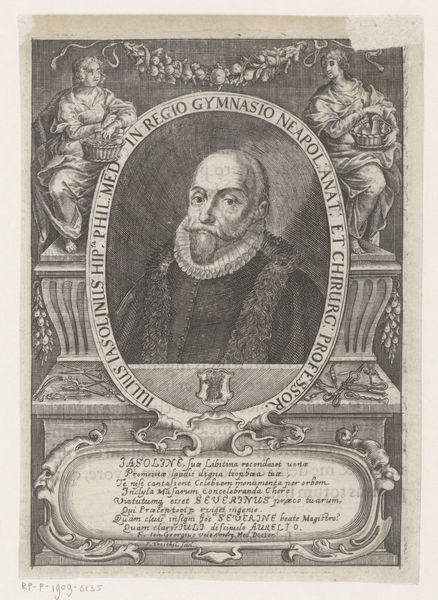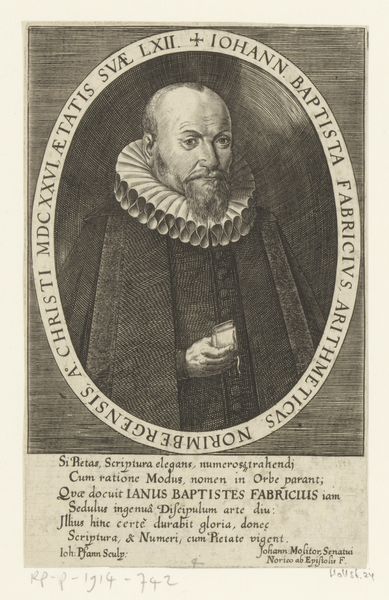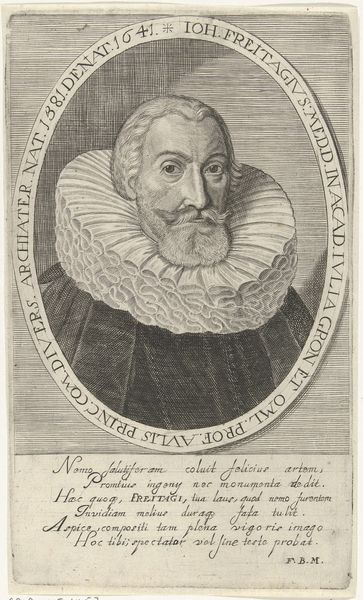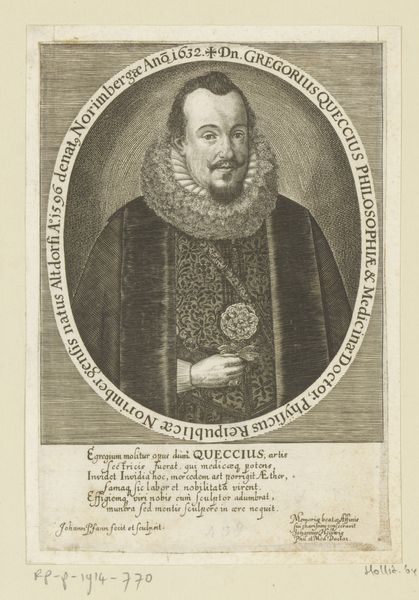
print, engraving
#
portrait
#
baroque
# print
#
engraving
#
calligraphy
Dimensions: height 190 mm, width 122 mm
Copyright: Rijks Museum: Open Domain
Curator: This print, an engraving dating from 1641 to 1665, presents a "Portret van Johann Rötenbeck" by Johann Friedrich Fleischberger. The gentleman stares directly at the viewer, doesn't he? Editor: Yes, an unwavering gaze… almost unnerving. The heavy lines and ornate lettering, combined with his severe expression, suggest a figure of considerable power or status in their community. The monochrome palette only adds to the overall gravity. Curator: The subject's rigid posture and high collar contribute to this formality, signaling the significance of portraying Johann Rötenbeck in such a stately manner, most probably hinting his membership in a distinguished intellectual society or some noble rank. We must think how early modern period art worked as a PR campaign for rising individuals and institutions. Editor: Indeed. The framing elements—coats of arms and that swirling inscription around the central portrait—become visual cues for unpacking his identity and the values he represented, particularly as a "Burger und des Raths zu Nürnberg." It also emphasizes this as a construct, intended to convey particular social information. What were some of the social expectations placed upon the figure? Curator: Consider the inscription beneath the image, spelling "Gotsfurcht," implying reverence or God-fearing, coupled with notions of artistry ("Kunst"), fidelity or loyalty ("Treu"), and piety or devoutness ("Frommigkeit"). These terms would encompass the set of principles defining success during that period. It also hints at an interesting contrast of expectations about the identity of someone, particularly as that relates to the city, the guilds, religious affiliations and other demographics of the population. Editor: The fact that it’s an engraving, meant to be reproduced, speaks to a desire to disseminate this image widely—to establish a specific reputation for both Rötenbeck himself and perhaps even for the ideals he supposedly embodied. One might explore gender, racial, and economic intersections that might contribute to our interpretation of this image today. Curator: The choice of Baroque-style calligraphy, dense with information surrounding the central figure, further enforces this feeling of rigid respectability, a value still cherished among elites in contemporary Europe and globally, albeit with modern nuances. Editor: Right. Overall, I come away with a sense of imposed, almost performative virtue – an attempt to control how Rötenbeck was perceived in the public imagination of Nuremberg. Curator: Yes, and analyzing that very performance lets us ask better questions.
Comments
No comments
Be the first to comment and join the conversation on the ultimate creative platform.
